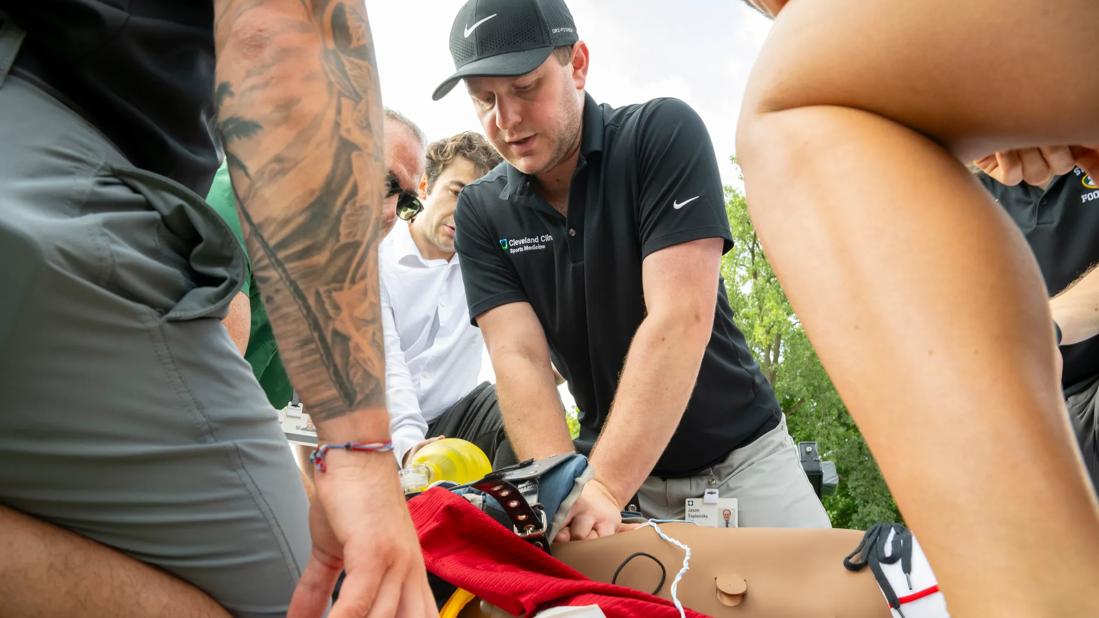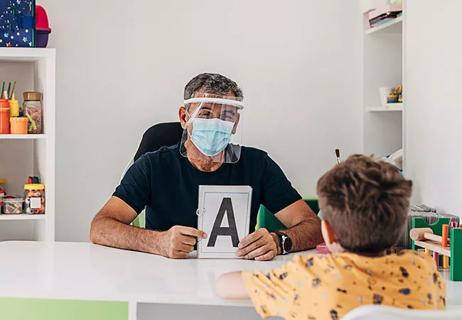How to identify at-risk patients

The event might not have been preventable, but there are steps physicians should take to make sure potential risk factors are caught early.
Advertisement
Cleveland Clinic is a non-profit academic medical center. Advertising on our site helps support our mission. We do not endorse non-Cleveland Clinic products or services. Policy
Whenever a child collapses and dies playing sports, the story makes the news. Inevitably, the child’s physician wonders “Did I miss something that could have prevented this from happening?”
Generally this was not the case, says Cleveland Clinic Children’s Chair of Pediatric Cardiology Elizabeth (Tess) Saarel, MD.
“These children are often in otherwise perfect health. Although some heart abnormalities that cause sudden death can be detected early, the fact is that we are not going to pick up all cases before such an event occurs. Viruses can attack the heart. Inherited diseases like hypertrophic or dilated cardiomyopathy may not be revealed early. A child can be fine at age 16, and six months later, the heart is abnormal,” she says.
Exercise-related sudden cardiac death (SCD) occurs in about six to 10 children per 100,000 per year, making it less common than childhood cancer. Yet despite media hype, children with congenital heart disease rarely die during physical activity. When it does, however, the heart is generally to blame.
“Most times, these children could be saved by a defibrillator. This is why communities and schools should advocate to have a defibrillator present and BLS-trained students and personnel in locations where children exercise and play,” says Dr. Saarel.
She also believes in training adolescents in basic lifesaving skills. “I’ve had patients who were saved by other students who did CPR,” she says.
The death of a child on the playing field is generally followed by a public outcry for cardiac screenings prior to participation in sports. At present, imperfect screening tools and the rarity of these events makes universal medical test-based screenings in asymptomatic children ineffective from a cost-benefit basis. However, there are things pediatricians can do to help identify children with inherited heart disease and congenital heart defects, who are at risk for SCD.
Advertisement
“Take a good listen to the child’s heart for a murmur. Look out for warning signs that occur with activity, such as complaints of tachycardia, chest pain or fainting with exercise. If the child has any of these symptoms, a family history of any of these symptoms or a family history of unexplained SCD at a young age, have the child screened and tested by a cardiologist,” says Dr. Saarel.
It’s the cardiologist’s job to figure out how risky sports participation will be. It’s not always easy since data on exercise in children with congenital heart disease are scarce.
“We are trying to get more information on which children with congenital or acquired heart disease should or should not participate in sports. Sports are generally good for us in many ways, so we need to make a fine determination as to when activity crosses the line and becomes too risky,” she says.
Advertisement
Advertisement

Cleveland Clinic physicians offer their insights

Increasing support for breastfeeding patients

Program has facilitated nearly 300 consults across 25 departments in less than a year

Though completely preventable, lead poisoning remains a public health threat

Differences in infection rates, management, outcomes and transmission

Helps patients visualize proper tongue placement

On the need for coordinated care